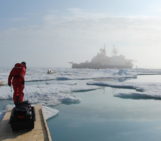Fieldwork is vital to understanding all sorts of Earth processes, but that doesn’t make it easy! James King, a researcher from the University of Oxford, describes what it takes to set off on a scientific expedition…
Although the classic text on sediment transport by wind by Sir Ralph Bagnold was written way back in 1941, the mechanics of dust storms and their effects on the climate are still not well-understood. One of the reasons for this lack of advancement is the difficulty in accurately measuring these processes at the source of emission. Recent campaigns funded by a whole range of science agencies have slowly started to provide greater access to measurements in source regions, but in most cases they are located in areas that are safer and more accessible, or utilise only aircraft and so miss measuring emissions directly on the ground. This usually circumvents the prospect of understanding source regions resulting in a series of limitations to the results and ultimately only providing reinforcement of transport theories developed decades ago instead of producing the radical new approaches they often promise.
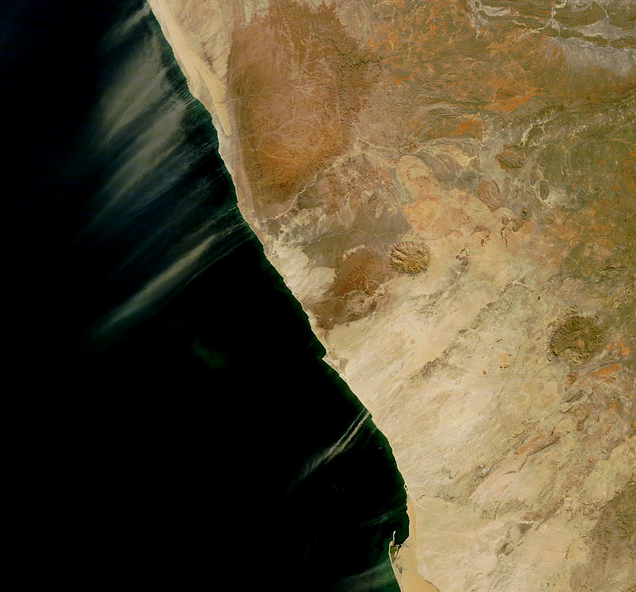
NASA Terra MODIS satellite captured these dust plumes coming off the Namibian coast on May 5, 2013. (Credit: NASA Earth Observatory)
As the lead field researcher on a dust emission project that promises one of these ambitious aims to redefine the transport process from the ground up, I can now fully understand the difficulties of these past campaigns! As part of the 2013 refit of the NERC-funded Dust Observation for Models (DO4 Models) project in part through additional funding from the Oxford University Fell Fund we have instrumented three of the dry valleys along the west coast of Namibia. The main reason that this did not take place in northern Africa where the dust storms are definitely more intense is that to study the emission process, the large amount of dust would also mean it would be very hard to figure out where it was emitting from and why. The Namibian coastline is not a small dust source though, as the dust is frequently picked up by remote sensing products (as in the above image from) during its most active periods of April through September. Therefore, the Namibian coastline has the perfect balance of dust productivity and emission source extent that will maximise the possibilities of a new understanding of dust emission mechanics.
One series of automatic weather stations (AWS) were planned to be located along the Huab River valley in the Skeleton Coast National Park, another along the Kuiseb River that drains through Walvis Bay, and the last set along the Tsauchab River that ends in the Namib Sand Sea before even reaching the Ocean. With a distance between the farthest north and south weather stations at over 800 km on gravel and salt roads the effort required into setting up and maintaining these sites will be nothing less than heroic.
For those that have never done fieldwork with a lot of equipment in a foreign country the logistics for just getting what you need for when you need it requires a degree in foreign policy. Between carnets (which is essentially a passport for equipment), insurance, dangerous good exemptions, and risk assessments it is a wonder that anything happens at all. Luckily for this project a lot of the legwork had been done in the previous two years running the project in neighbouring Botswana, meaning almost all of the heavy and awkward equipment was stored over the rainy season. Only the expensive equipment (think £400K+) which was on a carnet was shipped via air freight a couple weeks ahead of when we were to arrive ourselves. The stored equipment was transported over to the coast with two Hilux vehicles with trailers covering the 700 km journey the week prior to setup (during the EGU General Assembly) by other team members.
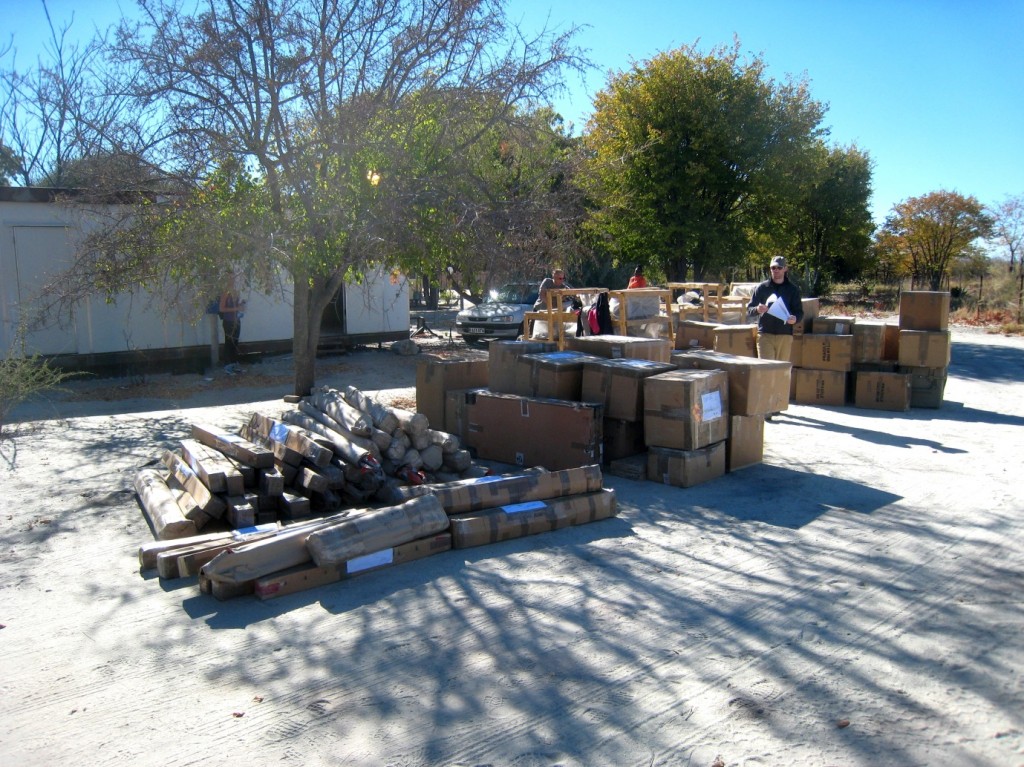
The amount of equipment required for the eleven dust storm specific weather stations. Shipping not included. (Credit: G.F.S. Wiggs)
The AWS stations used for this campaign do not resemble a typical setup as we are interested in some very specific aspects of the weather associated with dust storms. This includes a dust concentration instrument made by TSI Inc. that is mounted on a tripod to get it into the air stream above the layer typically occupied by coarser sand-sized particles moving only horizontally along the ground surface. This horizontally moving sand gets measured in two ways: 1) by a sensitive microphone-like sensor that uses a piezoelectric crystal called a Sensit placed at the surface; and 2) by a series of sand-catchers placed at different heights to record the profile of sediment moving. Additionally, at two of the sites we have used Cimel photometers that look at the sun and determines how many and of what size particles are in the atmosphere knowing how bright the sun should be for its location (known best for their use in the AERONET network). These are all recorded automatically on dataloggers powered by solar panels and batteries, requiring a myriad of field and programming skills to keep all instruments working properly. As we had set the stations up on a previous field campaign in Botswana on the Magkgadikgadi Pans we were aware of the time and effort required to install them (see this timelapse video of the 2011 campaign install).
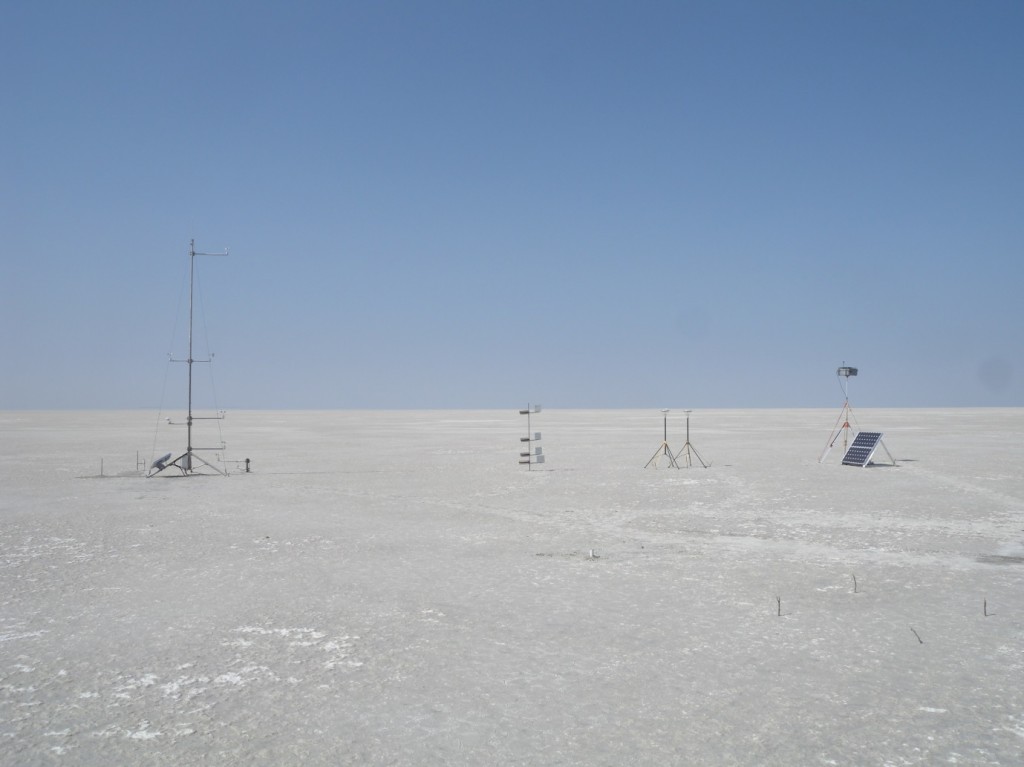
Typical setup of DO4 Models dust specific automatic weather stations shown here installed on Makgadikgadi Pans, Botswana in 2011. (Credit: F. Eckardt)
So now we had the people (properly trained by the ruthless health and safety personnel), the equipment, and the plan – all that was needed to do was drive to the sites and throw everything up and hit the power switch, right? On paper, yes, but as it turns out the logistics were much more difficult than ever anticipated.
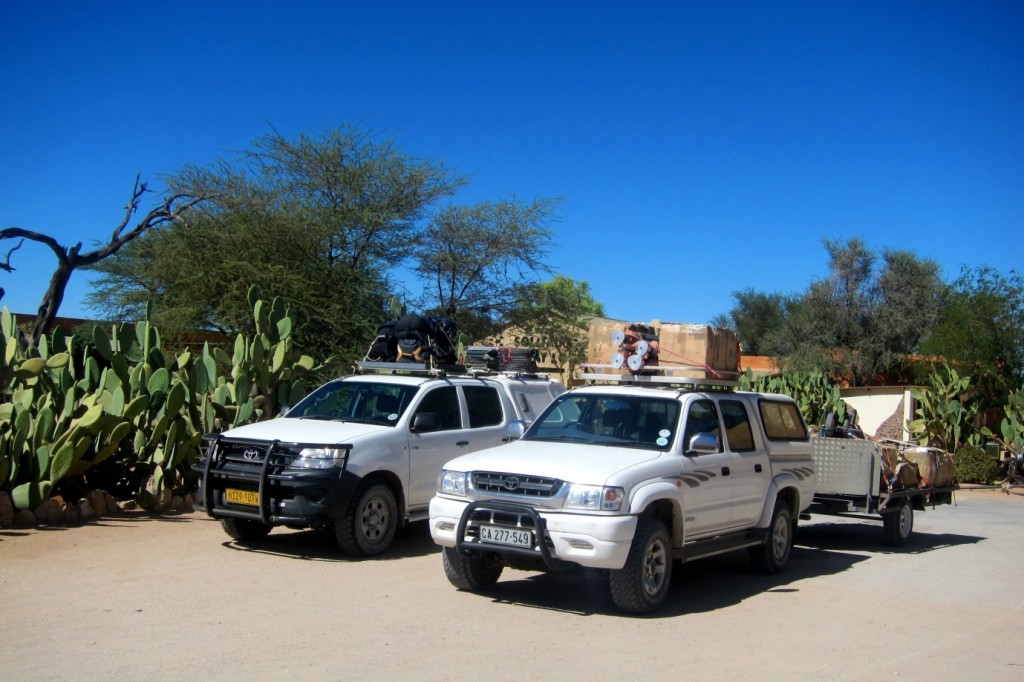
All ready for action! The two trucks all loaded up with equipment for setting up five complete sites, pictured here outside Solitaire, Namibia. (Credit: A. Dansie)
By James King, University of Oxford

